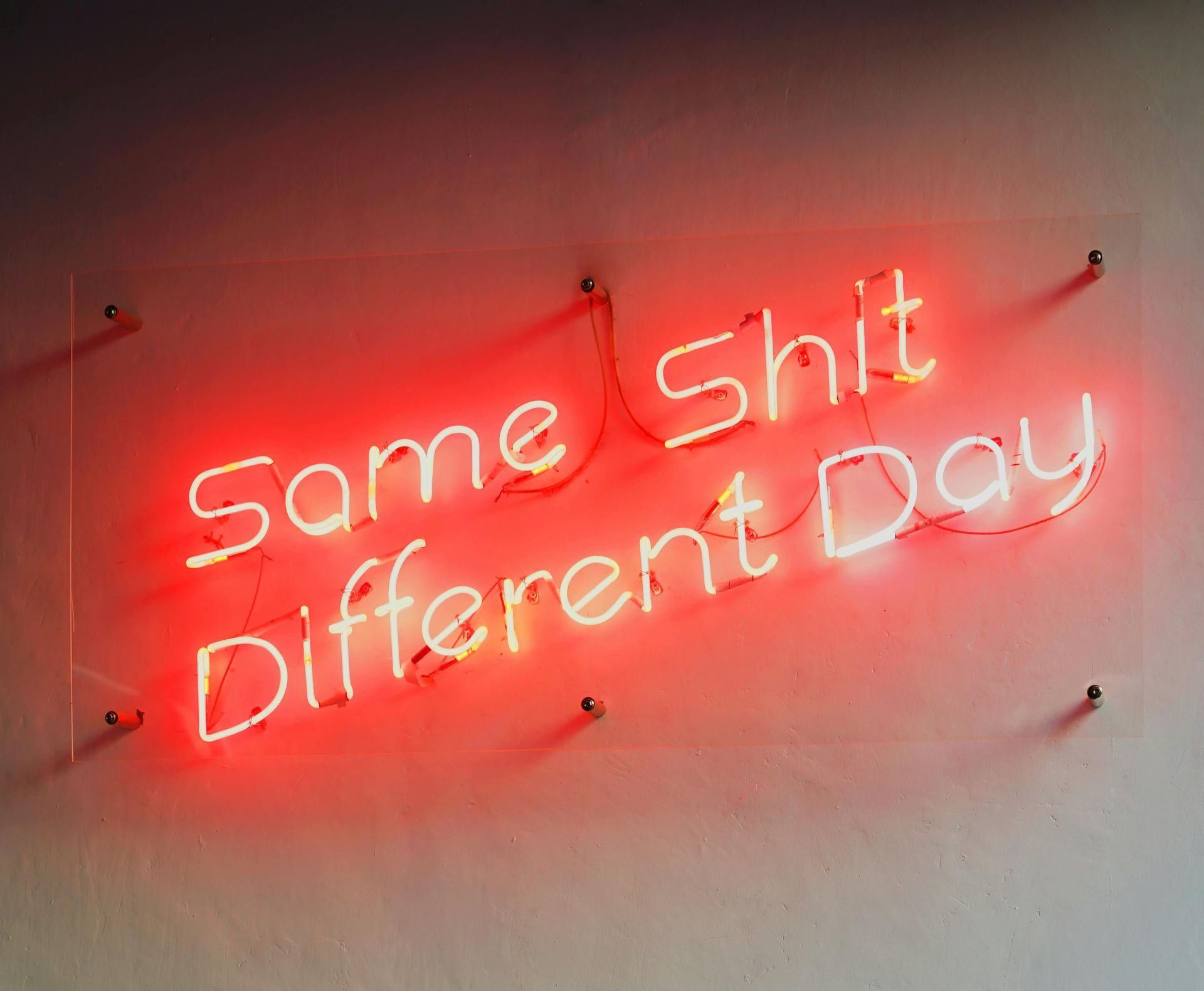Why We Repeat Old Patterns (Even When They Hurt Us)
Understanding the pull of the familiar—and how therapy can help us break free.
Have you ever thought, “Why do I keep ending up here?” Maybe it’s falling for the same kind of person who can’t show up for you, burning out from always saying “yes,” or freezing during conflict even when you want to speak up. You know it doesn’t serve you—but somehow, you find yourself back in the same loop.
The truth is, you’re not weak or broken. You’re running patterns that once helped you survive—and your brain hasn’t yet learned how to let them go.

Why Familiar Feels Safer Than Healthy
Our brains are like efficiency machines. They love routines, shortcuts, and anything that feels predictable. Why? Because predictability = safety. Even if a pattern causes pain, your brain would often rather stick to what it knows than risk the unknown.
So if growing up, you learned that being agreeable kept the peace, you might now find yourself saying “yes” when you mean “no.” If expressing big emotions got you ignored or punished, you might still hide your feelings as an adult. These were survival strategies once—they worked in their original context.
The problem? You’re not in that environment anymore. But your nervous system hasn’t gotten the memo.
The Brain's Pattern Loop
Here’s what’s happening behind the scenes:
- Trigger → Something reminds your brain of an old situation (even subtly).
- Autopilot Response → Your brain kicks in with the same reaction it’s always had.
- Reinforcement → The cycle plays out, reinforcing the old belief (e.g., “I’m not worth standing up for.”)
Over time, this becomes a loop: one you didn’t choose consciously, but one you can learn to interrupt.
Enter: Core Beliefs
According to cognitive-behavioral therapy (CBT), we all carry around “core beliefs”—deep ideas we’ve formed about ourselves, other people, and the world.
Some common ones?
- “I have to earn love.”
- “I’m too much.”
- “If I ask for what I need, people will leave.”
When we hold beliefs like these, we unconsciously seek out situations that confirm them—even if they make us miserable. It’s not sabotage; it’s your brain trying to make sense of things. But the good news is: beliefs can change.
So… How Do You Break the Pattern?
You don’t need to overhaul your entire life overnight. But you can start doing a few small things differently:
- Name the pattern
Literally write it down. “I tend to __ when I feel __.” The more specific, the better. - Notice when it’s happening
Awareness is everything. Once you see it, you have more power to pause before reacting. - Get curious, not critical
Ask: “Where did I learn this?” or “What was this protecting me from?” Shame shuts down growth—curiosity opens it up. - Try a tiny shift
Speak up, say no, stay present in a moment you usually escape. Even one new response can disrupt the loop. - Consider counselling
Therapy is like having a guide through the maze. A trained therapist can help you spot the roots of your patterns, understand their purpose, and create space for something new.
It’s Not About Fixing You—It’s About Freeing You
Here’s something important: repeating old patterns doesn’t mean you’re flawed—it means you’re wired for survival. These responses were built during a time when you had fewer choices, fewer tools, and maybe less support. They got you through.
But now? You’re allowed to outgrow them.
Healing isn’t about being perfect. It’s about recognizing what no longer serves you and gently choosing something different. It's about trading harsh self-talk for compassion, people-pleasing for boundaries, and reactivity for intention.
And remember: breaking a pattern isn’t a one-time thing. It’s a process. Sometimes you’ll catch it mid-loop. Sometimes after. Sometimes not at all—and that’s okay. Every moment of awareness is progress.

Ready to Do It Differently?
You don’t have to figure it all out alone—and you don’t need to have it all together to start. Counselling is a safe space to explore your patterns without shame or judgment. It’s where “Why do I keep doing this?” turns into “Now I understand.”
A therapist can help you:
- Connect the dots between your past and present reactions
- Explore healthier ways to cope, relate, and respond
- Build emotional tools you may have never had the chance to learn
- Practice self-compassion instead of self-criticism
- Choose new patterns that actually feel good
Real change doesn’t always look dramatic. Sometimes it looks like pausing before you react. Saying “no” when you used to say “yes.” Staying instead of shutting down. These small shifts are how freedom starts.
If you’re ready for something different, we’re here to help.
Your next chapter doesn’t have to repeat the last.
Reach out today—and let’s start the work of rewriting your story.



